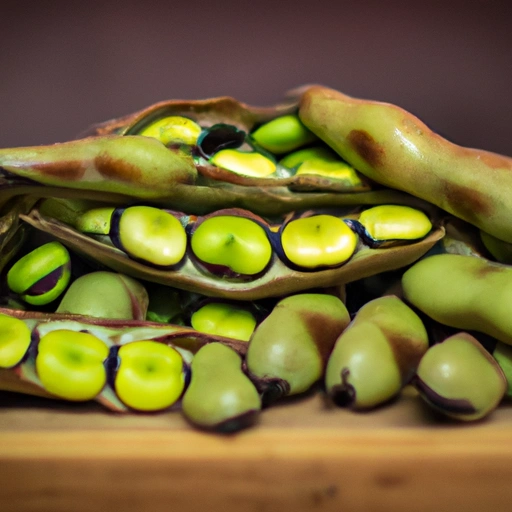Fava Bean
Description

The fava bean, also known as broad bean, is a nutritious legume that has been a staple in various cuisines around the world for thousands of years. These beans are grown inside thick, pod-like shells and are notable for their rich, buttery texture and slightly nutty flavor when cooked. Fava beans can be consumed at different stages of maturity – from fresh and green to dried and mature.
Common uses
Fava beans are commonly used in a range of dishes, including soups, stews, salads, and purees. They are often paired with other spring vegetables, such as peas and artichokes, or incorporated into grain dishes. In Mediterranean cuisine, they are frequently combined with olive oil, garlic, and lemon, while in Middle Eastern dishes, they can be found in falafel or as part of a spicy ful medames.
Nutritional value
Calories
A 1-cup (approximately 170g) serving of cooked fava beans contains about 187 calories (782 kilojoules).
Protein
That same serving size offers about 13 grams of protein, making fava beans a good plant-based protein source.
Fat
Fava beans are low in fat, with around 0.7 grams per serving.
Carbohydrates
Carbohydrates are present at about 33 grams per serving, including dietary fiber, which is beneficial for digestive health.
Vitamins
Fava beans are a good source of several vitamins, particularly folate (vitamin B9), which is essential for DNA synthesis and repair, and vitamin K, important for blood clotting.
Minerals
They also provide essential minerals such as iron, magnesium, potassium, and zinc.
Health benefits
Fava beans are associated with various health benefits, including reducing the risk of heart disease and improving digestive health. Their high fiber content can help lower cholesterol levels and regulate blood sugar, while the potassium found in fava beans can contribute to maintaining healthy blood pressure.
Potential risks
One potential risk associated with fava beans is favism, a hereditary condition leading to hemolytic anemia in individuals with a deficiency in the enzyme G6PD. Additionally, fava beans contain purines, which can exacerbate gout in susceptible individuals.
Common recipes
Fava beans are featured in a variety of recipes such as the classic Italian spring dish fava bean puree with chicory, Middle Eastern ful medames, the Spanish habas con jamon, and many others.
Cooking methods
They can be boiled, steamed, sautéed, or even eaten raw if very young and tender. When using dried fava beans, soaking and peeling may be necessary to ensure tenderness upon cooking.
Pairing with other ingredients
Fava beans pair well with a variety of flavors, including mint, parsley, lemon, garlic, olive oil, parmesan cheese, cured meats, and robust spices.
Summary
Fava beans are a widely used ingredient around the world, appreciated for their versatility and health benefits. From fresh spring salads to hearty winter meals, fava beans can enhance a multitude of dishes. Despite their potential risks for certain individuals, they remain a cherished staple in global cuisines, imparting a unique flavor and nutritional richness to any meal they grace.